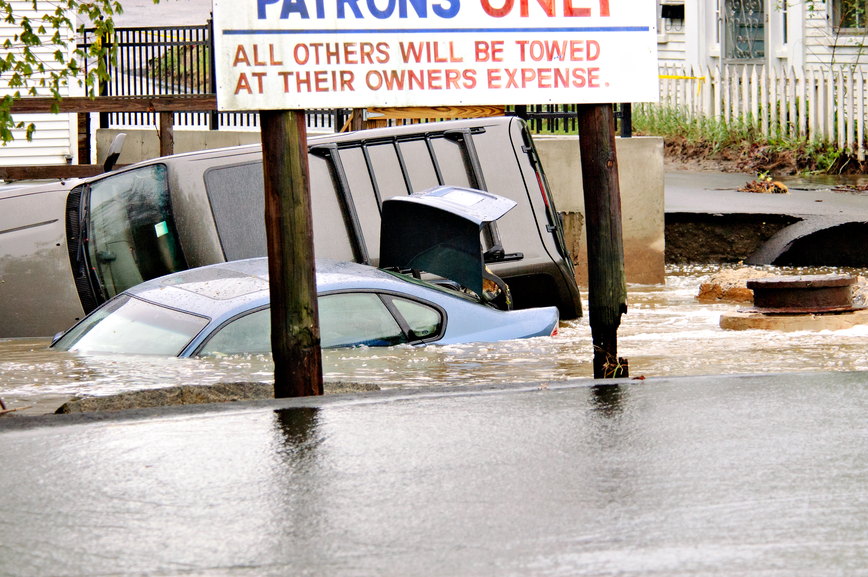How to Tell if A Car Is Flood Damaged
Whether you’ve had the misfortune of living somewhere that has suffered the wrath of mother nature recently or you accidentally dumped your parents’ Porsche in the nearest lake after evading “Guido the killer pimp”, the non-profit Car Care Council (www.carcare.org) has some tips on how to check your car for water damage.
Your Car Doesn’t Have to Be Flooded to Be Water Damaged
First thing to keep in mind is that your car doesn’t have to be flooded or completely covered in water to suffer water damage. When bad weather hits, people sometimes drive through high water. This can cause damage that may not be immediately visible. The water doesn’t necessarily have to be so high as to seep into the cabin to raise concern.
Check interior carpets, upholstery and door and trim panels for dampness. If they are wet, then the vehicle will need professional attention. If you simply let the carpet dry, it will quickly grow mildew and give off foul odors. Seat brackets, motors and modules should also be checked for rust and proper operation.
Check Under the Hood and Underbody
Pull the engine oil and transmission fluid dipsticks and differential plug. If the fluid appears milky, diluted, is no longer its original color or is beige in color, then there may be water in the oil pan. If you suspect that, then you should really have the car towed to your repair shop. Cranking the car with water present can damage your engine. That being said, the council reminds motorists that some new synthetic differential fluids may appear to be milky, but are not water contaminated. When in doubt, ask a car care specialist.
Also check the air filter for water. If it is wet, replace the air filter and change the oil.
Check the undercarriage, bumpers, radiator area and frame for mud, grass, dirt, debris and rust. If you see any of these, the car should be washed and cleaned as soon as possible. A car wash with a good under body spray is probably a good idea.
Brakes, Lights, Etc.
Have the brake system checked by a professional automotive technician. Check the exterior lights for moisture and water. Replace headlights and bulbs that contain water.
Listen for abnormal noises while the engine is running. Make a note of where the noise is coming from and take the car to repair shop to have it checked.
Have the suspension joints lubricated, if necessary. Many newer vehicles are lubricated at the factory for life, but these joints should be checked for rust.
Don’t forget, this is something to keep in mind when shopping for a used, or even new car, after any major flooding event in and around your part of the world. I mean I know it’s hard to believe people would lie about something like that when selling a used car, but trust me on this one! Also, like us on Facebook and follow us on Twitter, and Google+!

